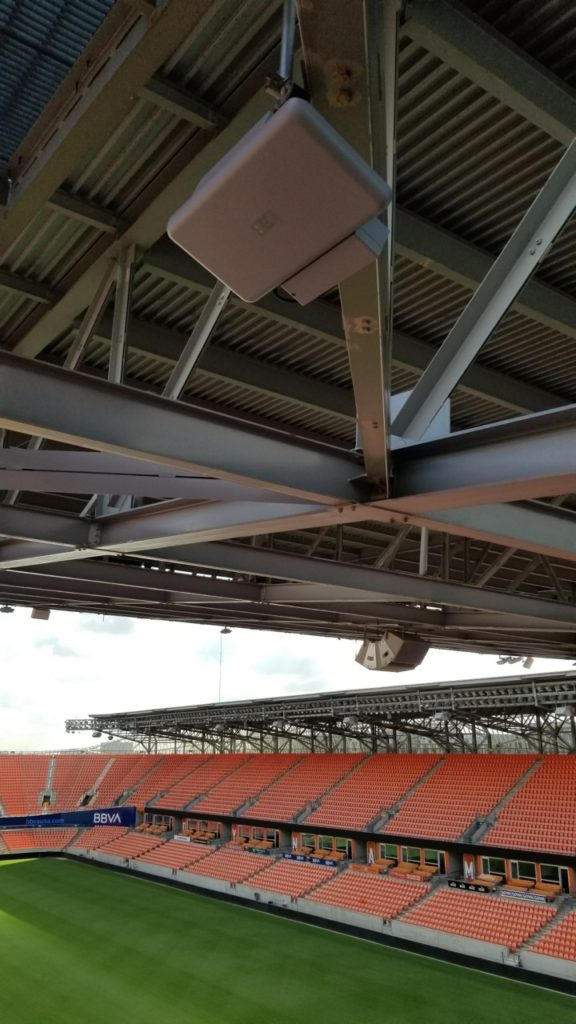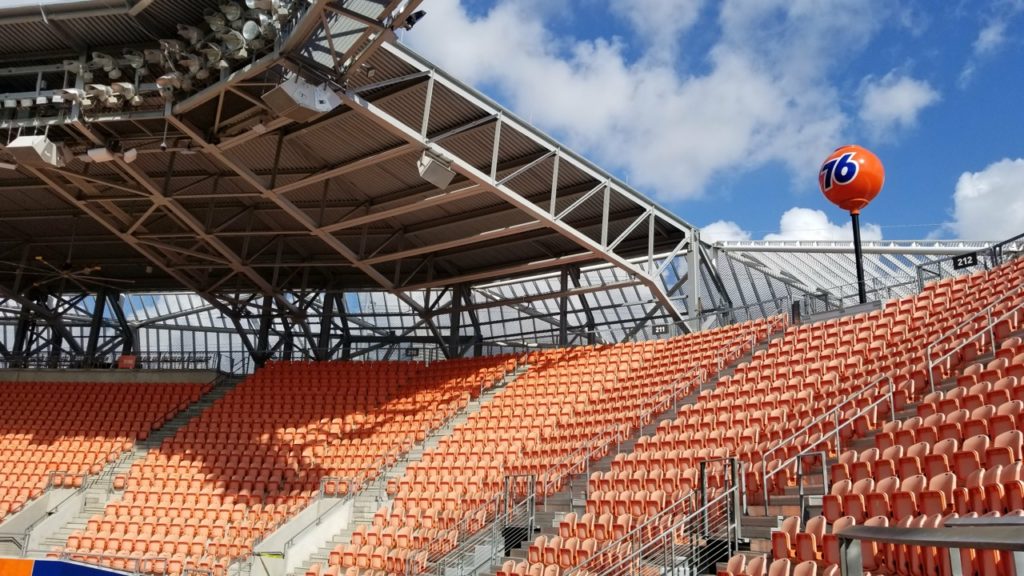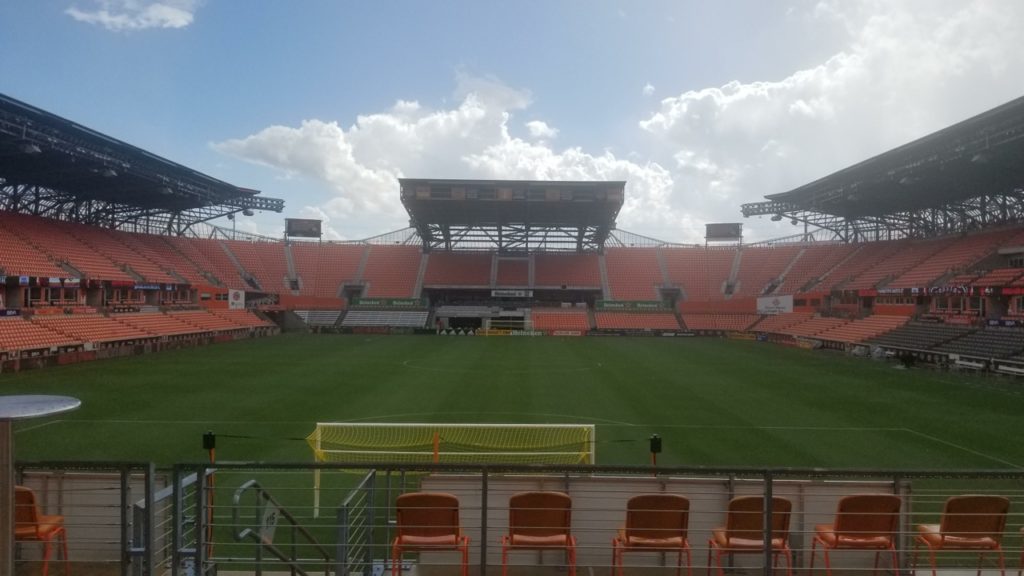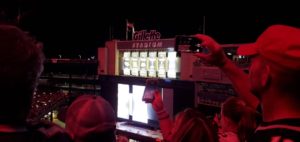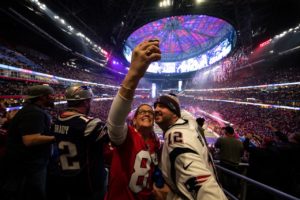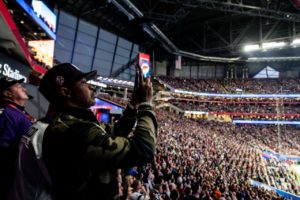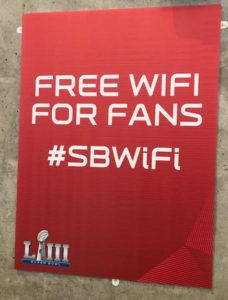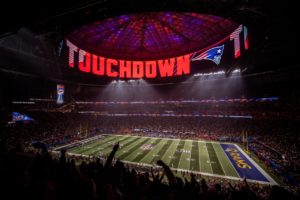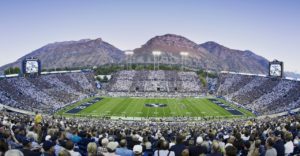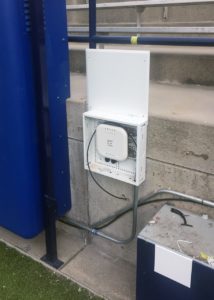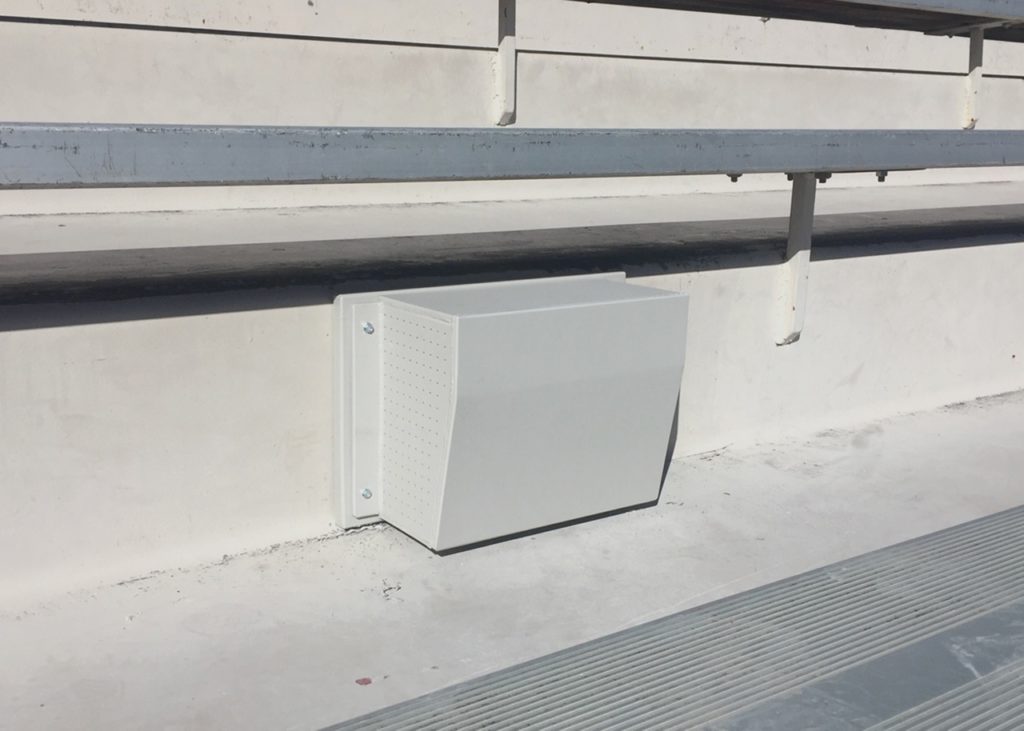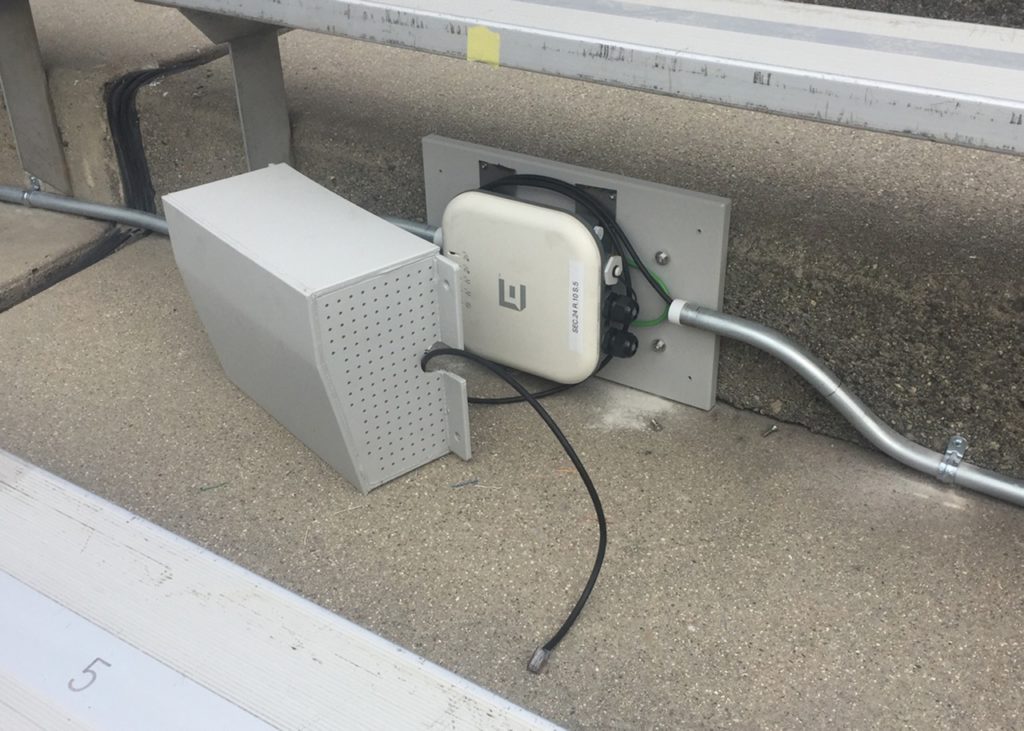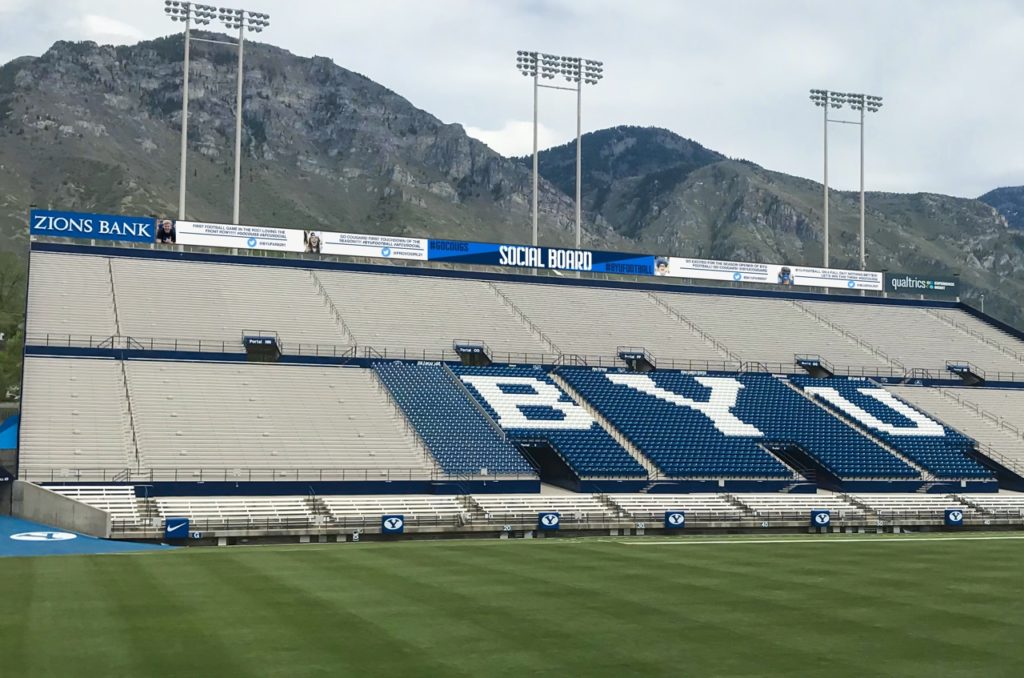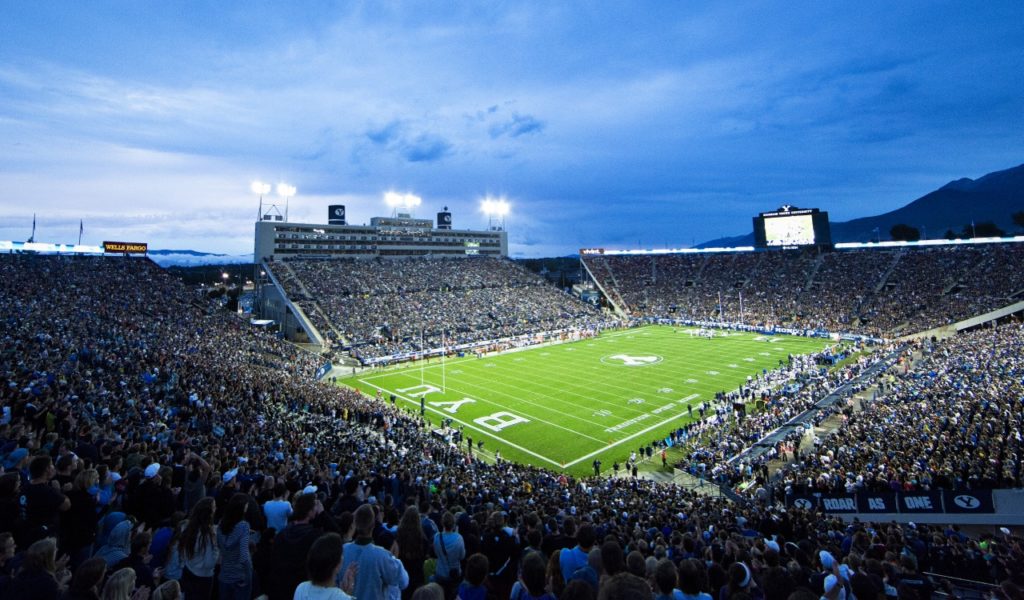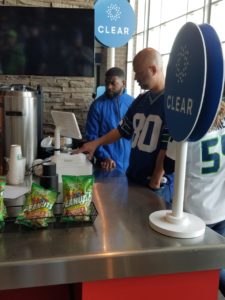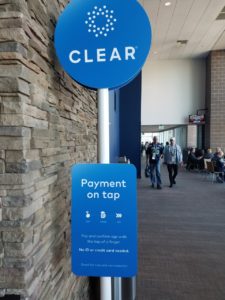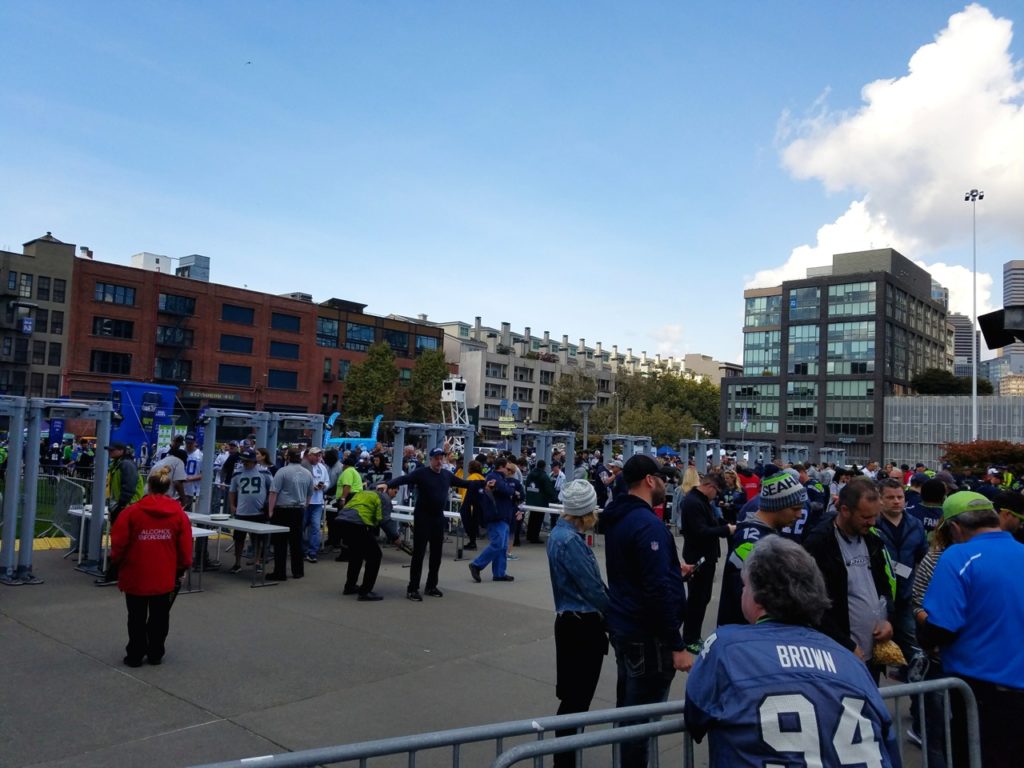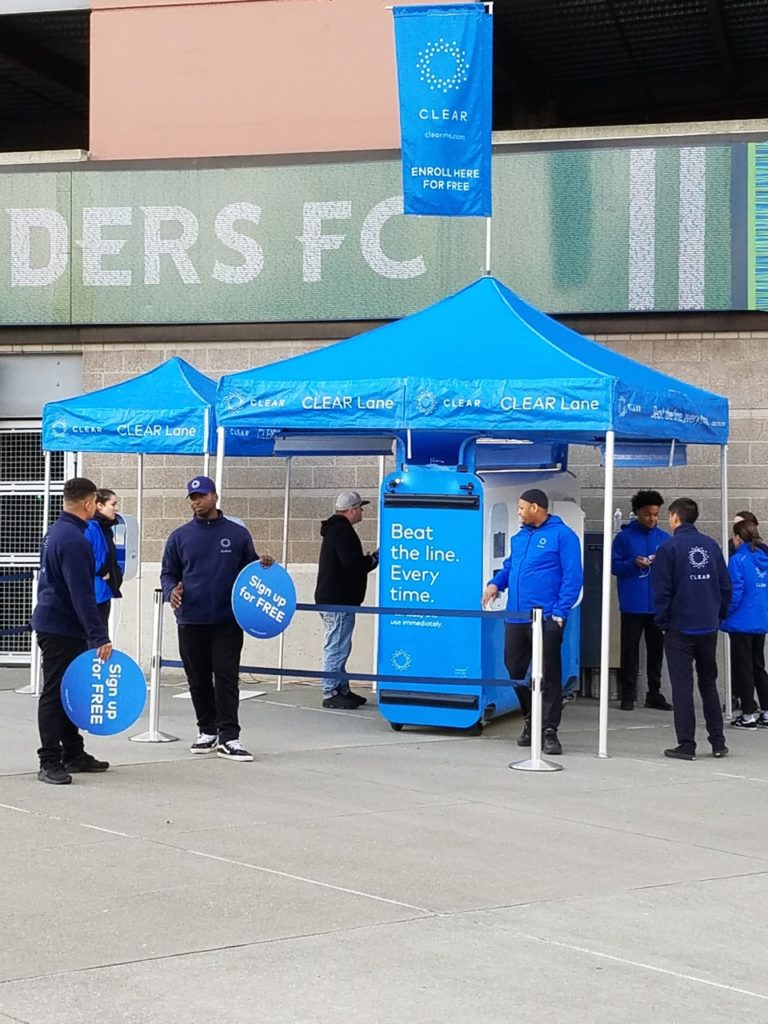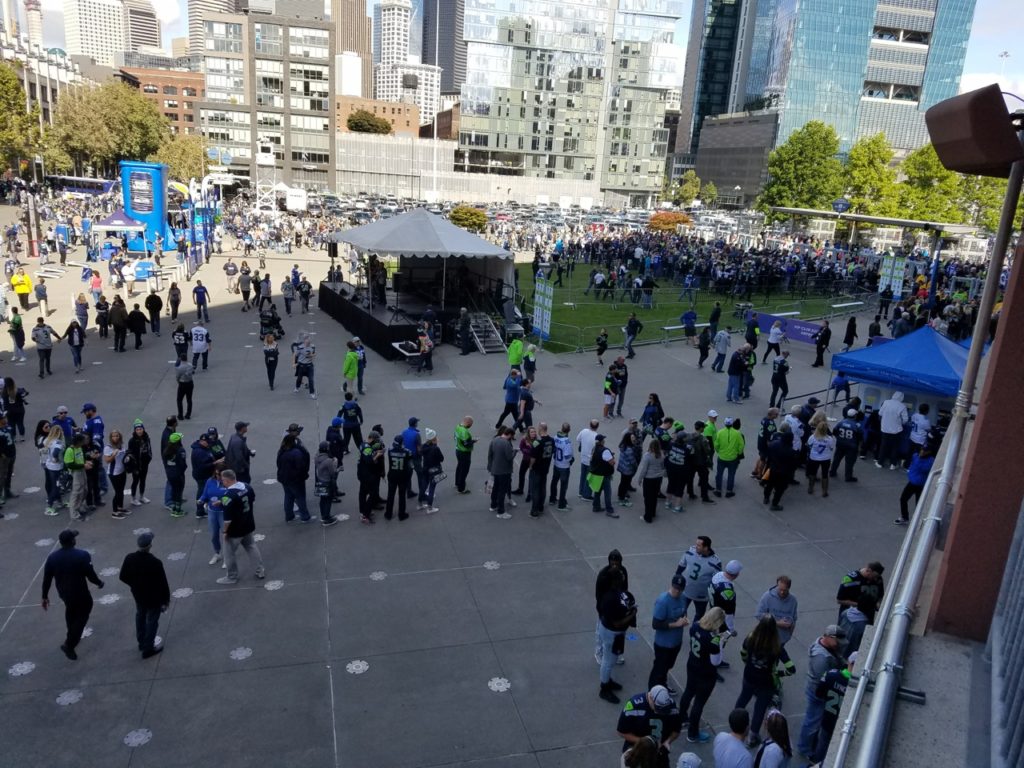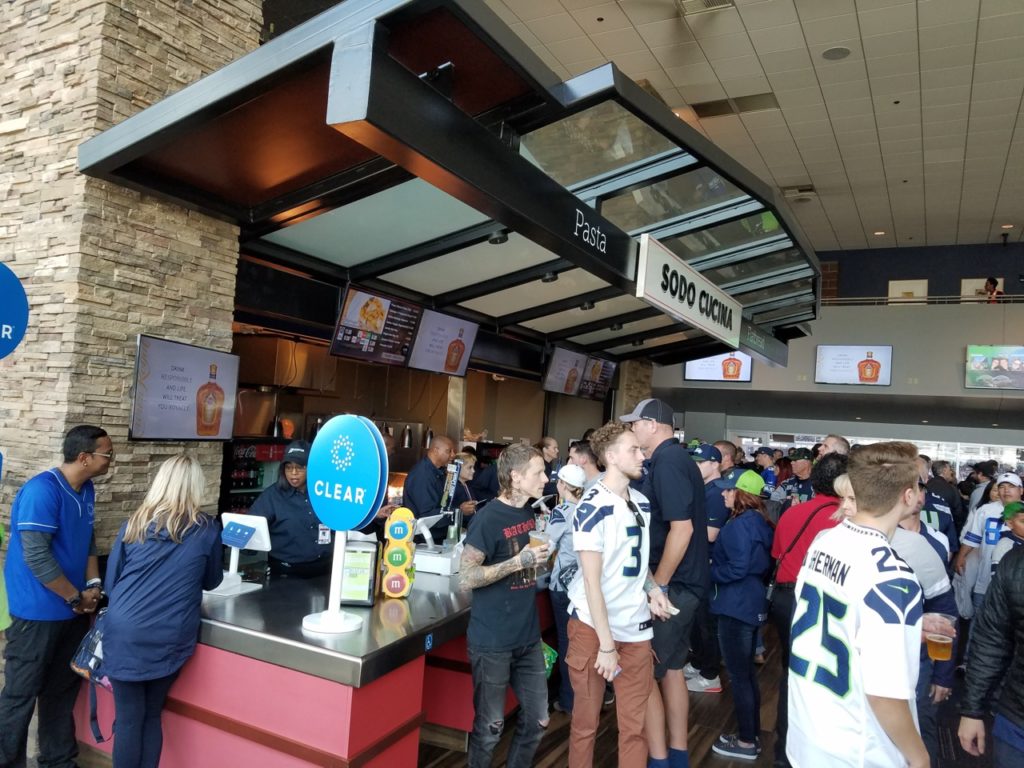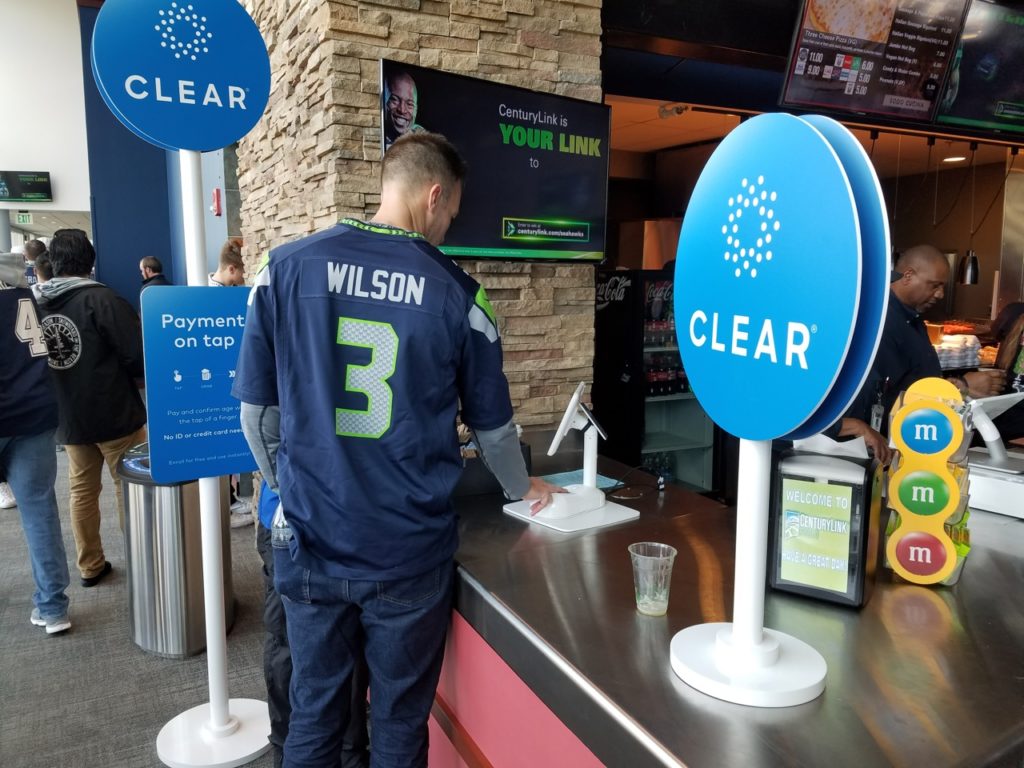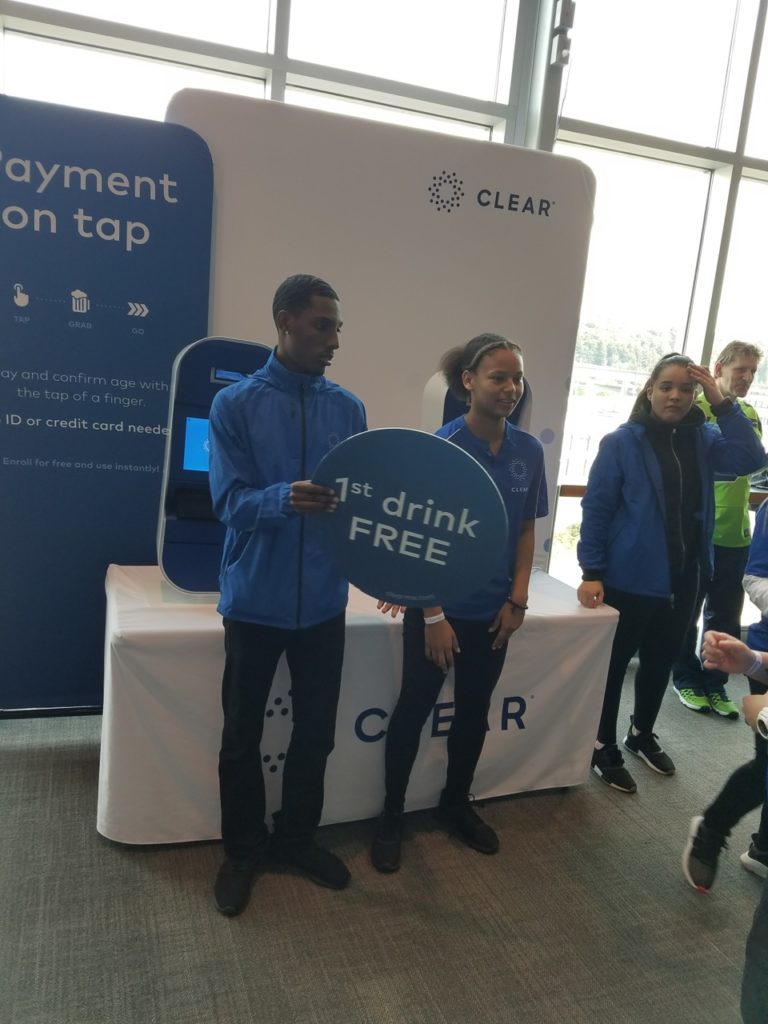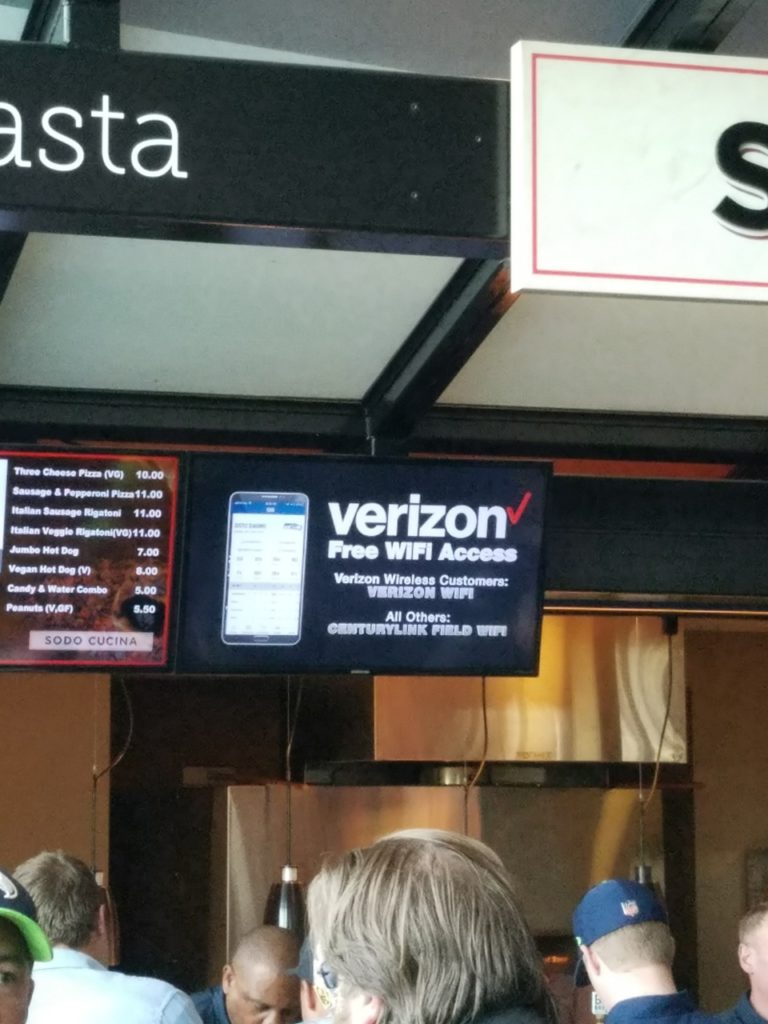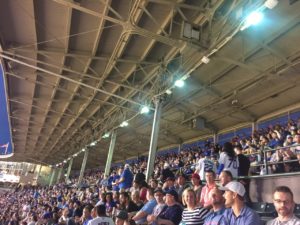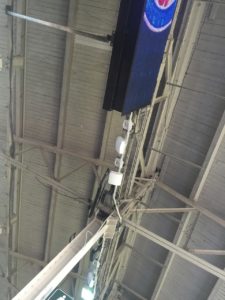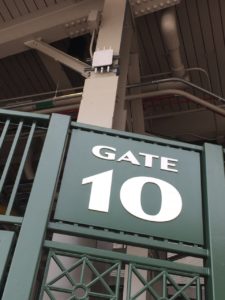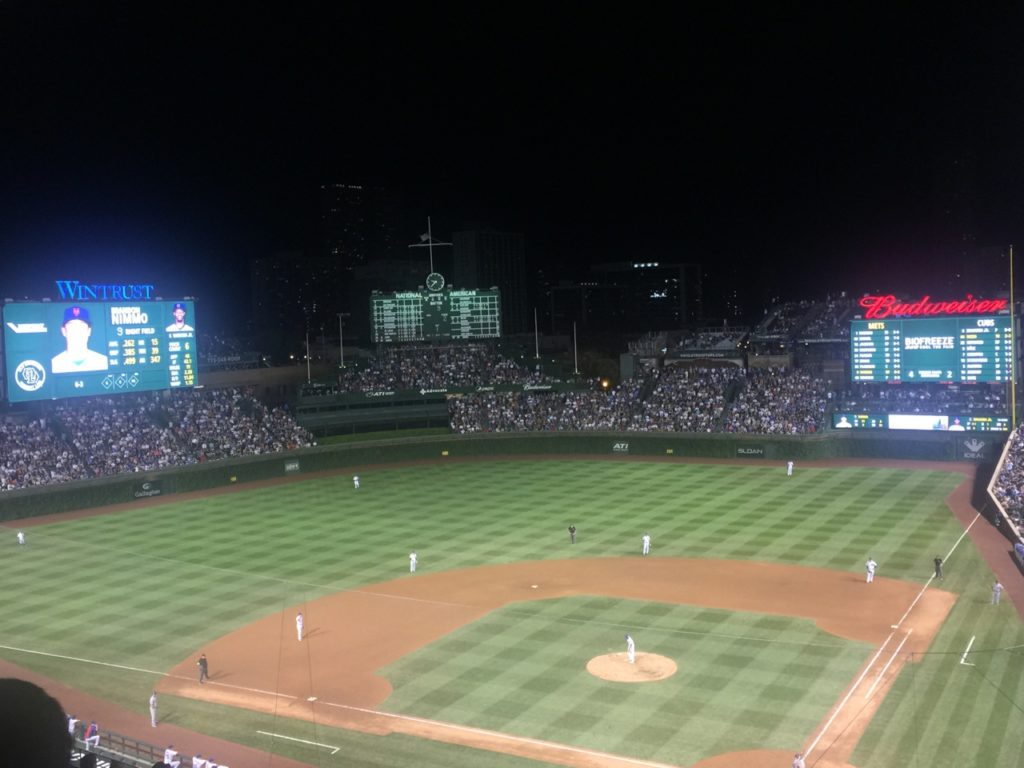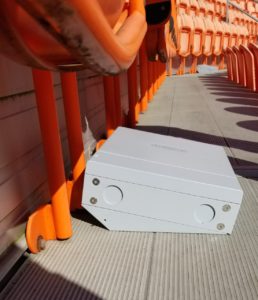
Under-seat Wi-Fi AP enclosure at BBVA Stadium in Houston. Credit all photos: Extreme Networks (click on any picture for a larger image)
The 282-AP deployment uses a mix of overhead APs for seating areas with overhangs, and under-seat enclosures for open-bowl seats. The enclosures in the photos provided to us are some of Extreme’s new designs specifically built for stadium deployment, with (especially for the under-seat enclosures) fan-friendly angles and easy access to get to the equipment inside. (Extreme showed some of the new enclosures to MSR during a visit at the SEAT Conference this summer.)
Any readers out there been to the 22,000-seat BBVA Stadium recently, give us a holler or send us some speed test results. More photos of the deployment below.
An overhead AP covers the top seating area
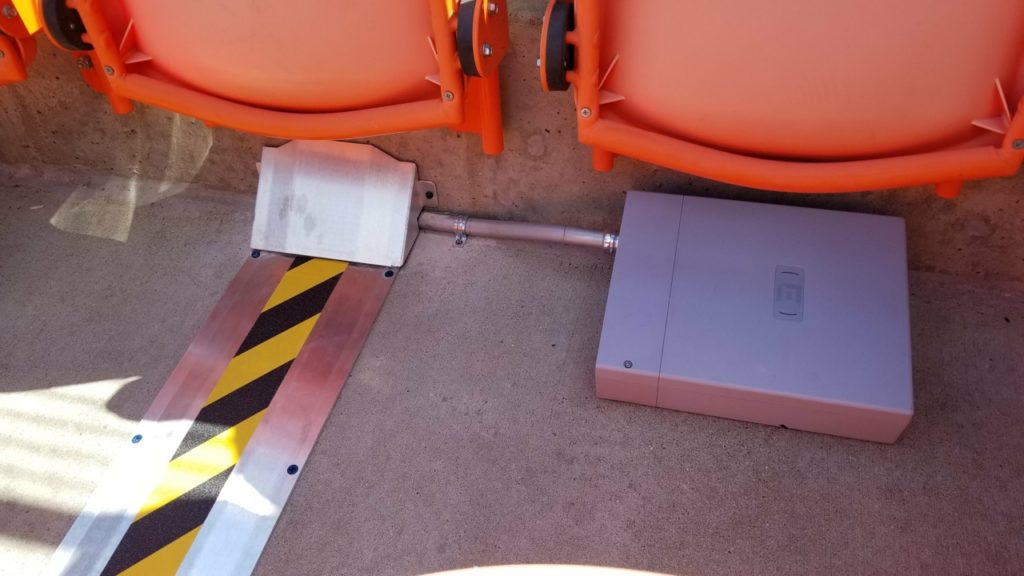
An under-seat enclosure and its conduit
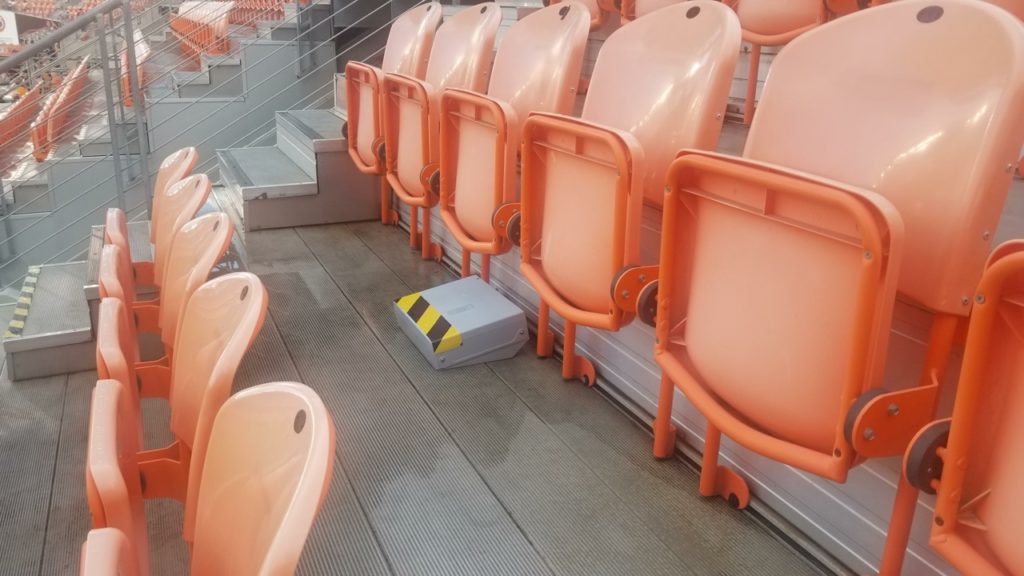
Note the angled pitch of the enclosure
More APs up top taking advantage of the overhang location
A good look at the overall architecture of BBVA Stadium
